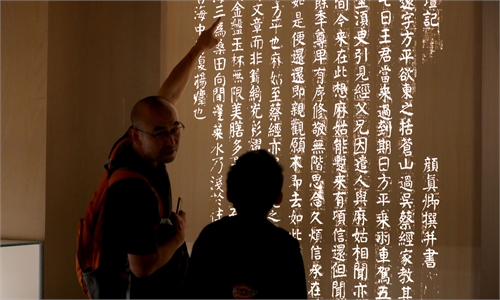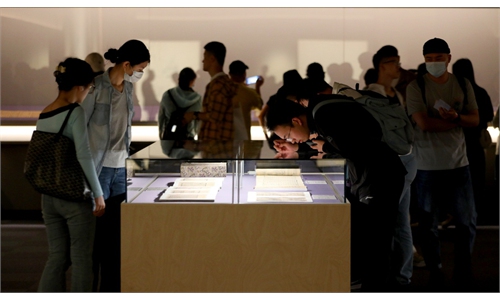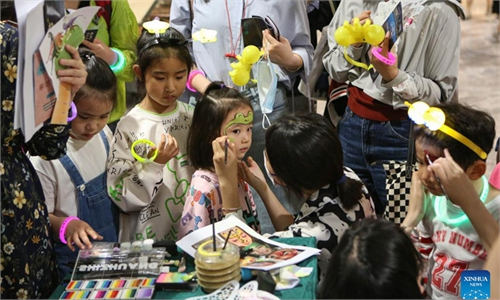ARTS / CULTURE & LEISURE
Yuncheng Museum examines cradle of Chinese civilization
Roots of a nation
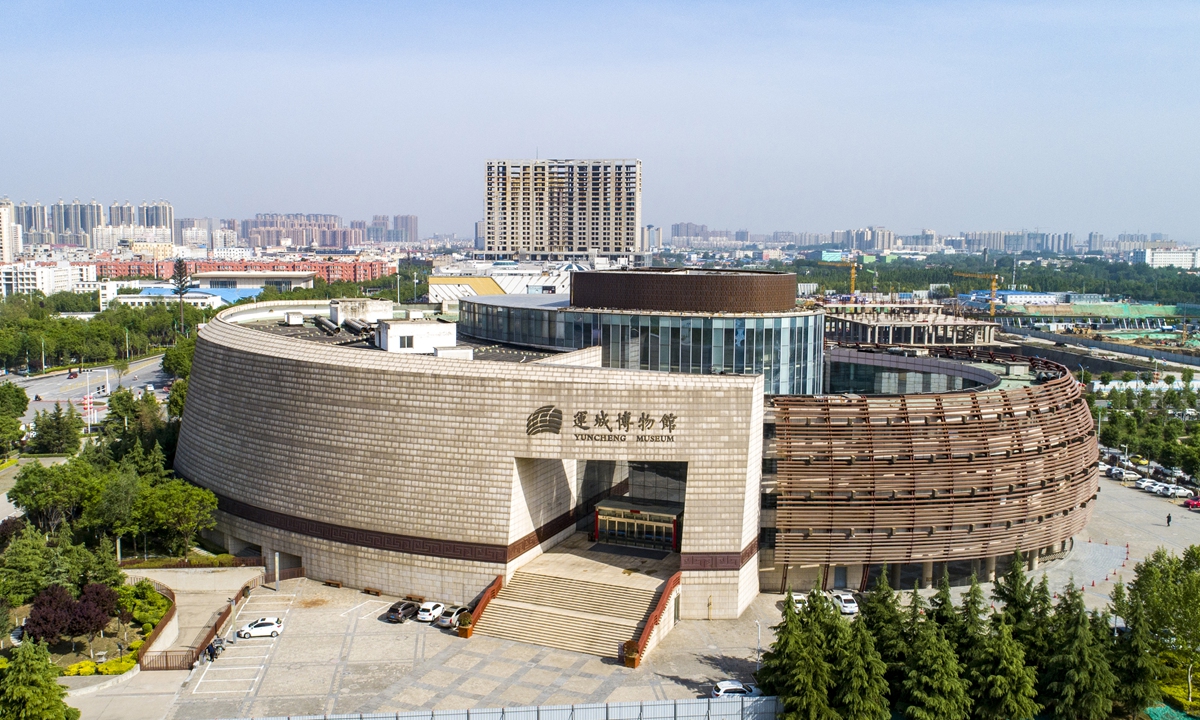
The Yuncheng Museum Photo: VCG
Chinese President Xi Jinping visited the Yuncheng Museum in Yuncheng, North China's Shanxi Province, on Tuesday.
Xi, also general secretary of the Communist Party of China (CPC) Central Committee and chairman of the Central Military Commission, visited exhibitions on topics including the origin of the Chinese civilization and the history of the local salt industry to learn in detail about the origins of mankind and the development of early Chinese civilization in Yuncheng. He was also briefed on the formation, development and historical evolution of Yuncheng Salt Lake.
Yuncheng, formerly known as "Hedong," is one of the cradles of Chinese civilization. With its rich cultural heritage spanning thousands of years, Yuncheng has become a high-profile destination for those interested in exploring China's roots.
From the earliest hominid fossils to ancient silk production and salt mining techniques, Yuncheng is home to some of the most significant artifacts and sites in Chinese history. The millennia-old civilization has left rich cultural relics in Yuncheng, with the Yuncheng Museum showcasing over 35,000 artifacts, including 675 especially precious pieces.
Xi stressed that the museum has a great collection of precious cultural relics, or "national treasures."
He called for further efforts to advance the country's national research project on tracing the origins of Chinese civilization and historical research on this civilization and improve the capabilities of protecting and utilizing cultural relics and passing on Chinese cultural heritage, according to the Xinhua News Agency.
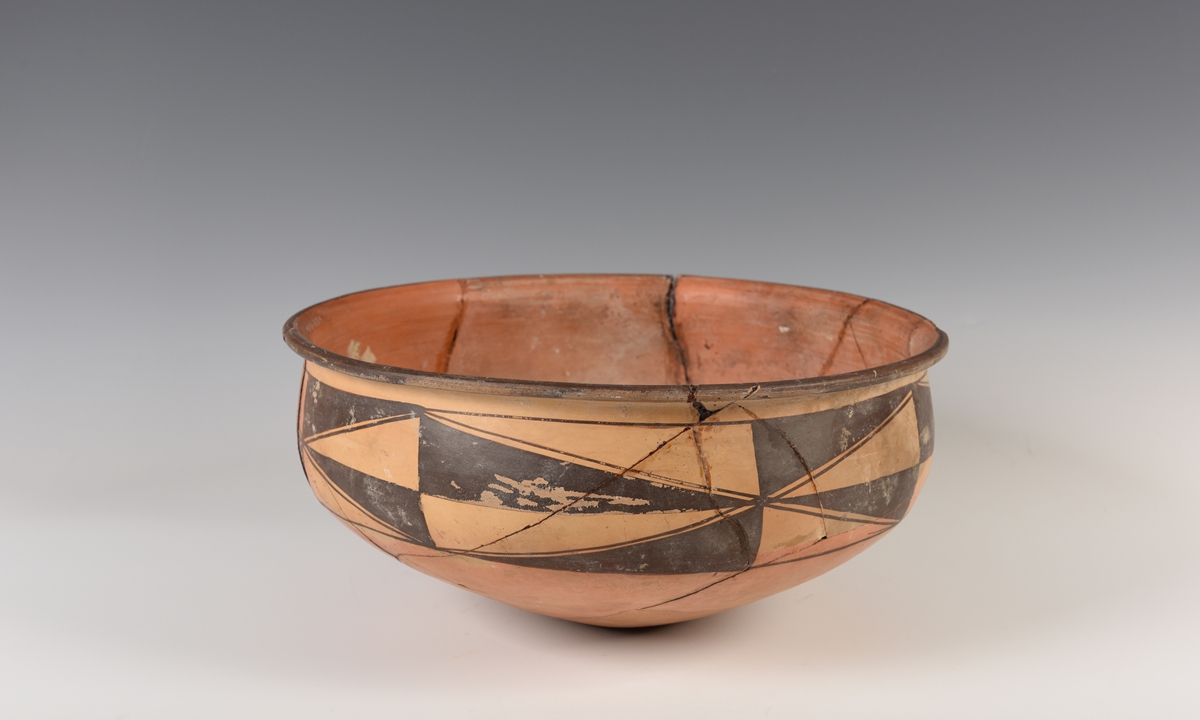
A ceramic pot at the Yuncheng Museum Photo: Courtesy of the Yuncheng Museum
Highlighted cultural relics
Located in the Salt Lake district of Yuncheng, the Yuncheng Museum opened to the public in 2016.
One of the most significant finds at the museum is the fossils of ape discovered in Shanxi Province. The fossil exhibits many features of higher primates, such as larger canine teeth, a rounder mandibular angle and an upright chin.
"I highlighted the fossil during the visit as the discovery pushes the origin of higher primates back 10 million years and challenges the notion that humans originated from Africa. Those cultural relics are also solid support for our cultural confidence," Wei Long, the commentator and director of the Yuncheng Cultural Relics Protection Center, told the Global Times on Sunday.
Another cultural relic that reveals the ingenuity of ancient people in Yuncheng is the Xiyin Site in Xia county. In 1926, Chinese archaeologists conducted their first independent field excavation and discovered half of a cocoon with man-made cuts in it. In recent years, archaeologists have unearthed five stone-carved silkworm pupae around the site, dating back 5,000 to 6,000 years ago.
These findings provide vital clues to the origin and spread of Chinese silk, corroborating the ancient legend of Leizu, the wife of the Yellow Emperor who is considered one of the common ancestors for all Chinese, and how she taught people to raise silkworms in what is today Xia county.
The exhibition about the Hedong Salt Culture showcases the process of salt lake formation through videos and demonstrations of traditional salt production methods.
The Hedong Salt Lake is one of the oldest salt fields in the world, with a history of over 4,600 years of exploitation and utilization. The "Five-Step Salt Production Method," which originated during the Spring and Autumn and Warring States periods (770BC-221BC), became a vital technological contribution to the salt industry in China and the world. This technique predates European salt production methods by nearly a millennium and was listed in 2021 as a national intangible cultural heritage.
In recent years, Yuncheng has continuously increased its ecological restoration efforts of "returning salt to the lake." Several old photos showing the lake after the founding of the People's Republic of China and the production of salt and chemical industry in the 1980s are in sharp contrast with the photos of the colorful salt lake today. The salt lake has changed from a mining area and an industrial area to an ecological park and a tourist hot spot.
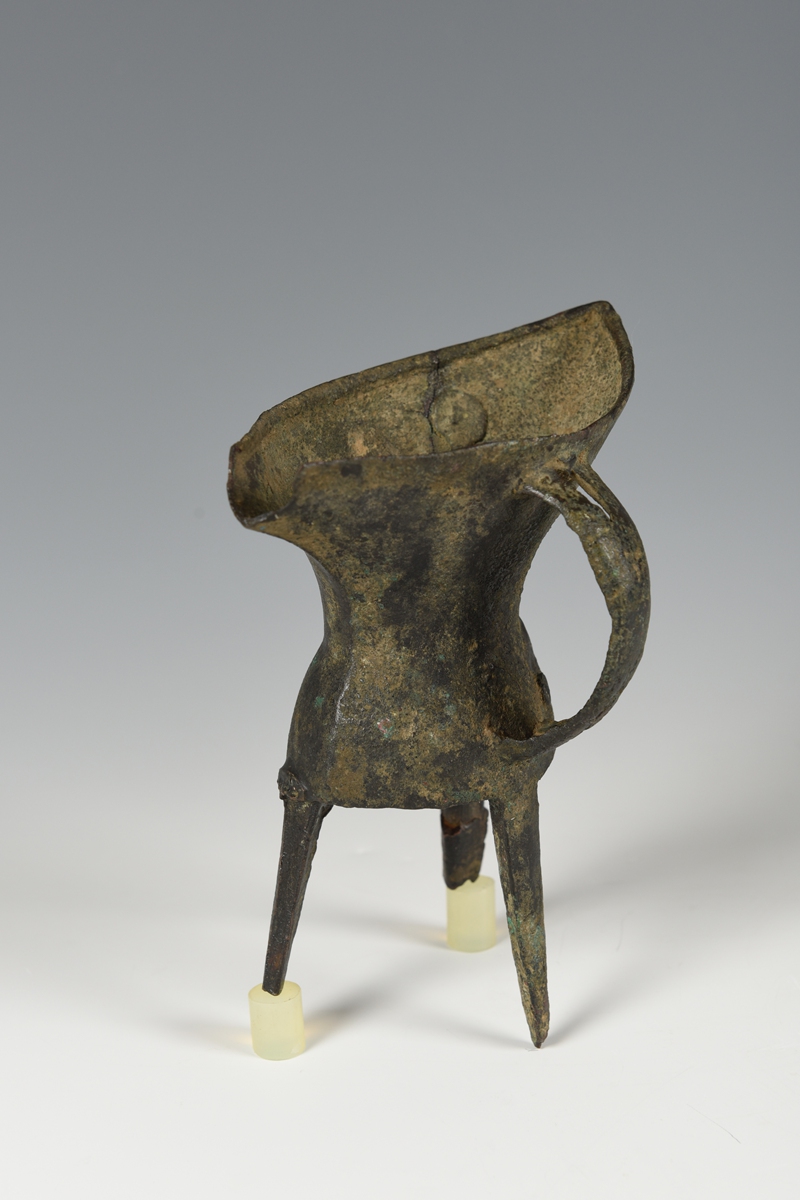
A bronze wine vessel at the Yuncheng Museum Photo: Courtesy of the Yuncheng Museum
Must-visit destination
Experts noted that the Yuncheng Museum, with over 35,000 items from archaeological excavations and collections, is a must-visit destination for anyone interested in China's ancient history. Each piece tells a story of the ingenuity and resourcefulness of the ancient people who shaped China's early civilization.
Zhou Wenquan, curator of the Yuncheng Museum, told the Global Times on Sunday that the cultural relics from Xihoudu site in Shanxi Province are important materials for the project exploring the origins of Chinese civilization.
The Xihoudu site dates back to about 2.43 million years ago, and its relics and dating provide evidence for the existence of early human survival and reproduction outside Africa, possibly before Homo erectus.
He pointed out that Yuncheng is a place where people can explore the rich cultural heritage of China and learn about its roots. Yuncheng offers visitors a glimpse into the evolution of human civilization.
"The Yuncheng Museum will continue supporting the China origins project," he said.

